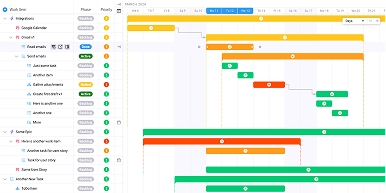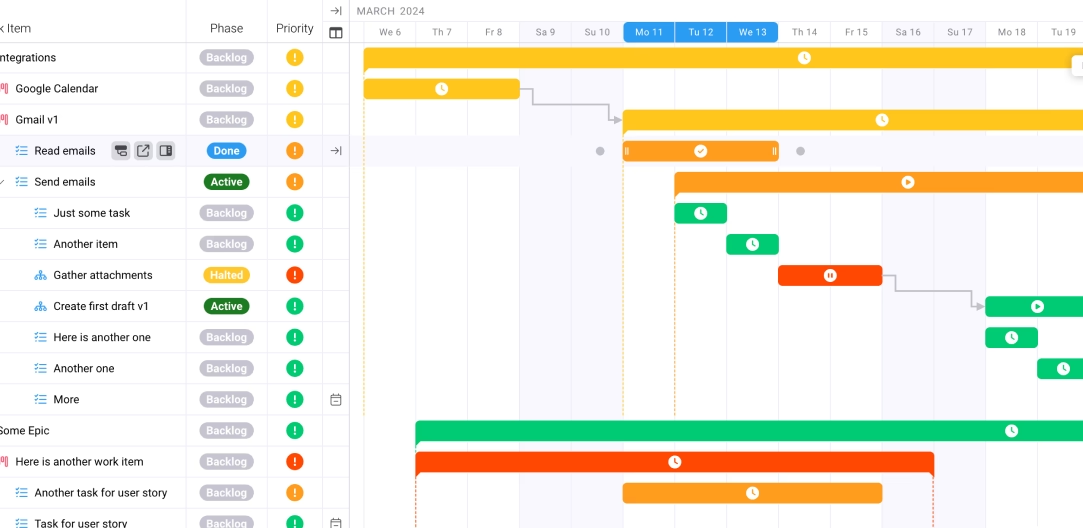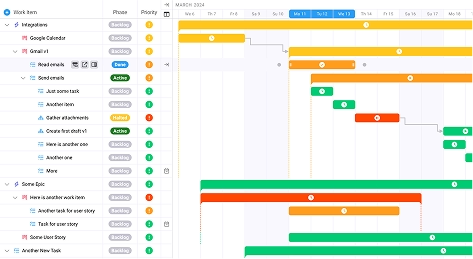
How to Attract High-Value Clients: 15 Proven Marketing Agency Client Acquisition Strategies
Key takeaways:
- Strategic positioning beats generic outreach: Agencies that specialize in specific verticals see significantly higher client acquisition rates and can command premium pricing
- Referral systems generate 34% of new clients: Building systematic referral programs creates the most cost-effective and highest-converting client acquisition channel
- Content-driven thought leadership: High-value clients seek agencies that demonstrate expertise through consistent, valuable content rather than traditional sales approaches
- Data-driven relationship building: Modern client acquisition relies on understanding prospect behavior, pain points, and decision-making processes through advanced analytics and personalized engagement
The marketing agency landscape has never been more competitive. While 37% of agencies cite client acquisition as their primary challenge, the agencies that thrive understand a fundamental truth: success isn’t about attracting more clients—it’s about attracting the right clients. The traditional spray-and-pray approach to marketing agency client acquisition has given way to strategic, value-driven methodologies that prioritize quality over quantity. How to Attract High-Value Clients: 15 Proven Marketing Agency Client Acquisition Strategies offers a contrarian yet proven framework that transforms struggling agencies into magnetic forces for premium clientele.
The Current Challenge: Why Traditional Client Acquisition Falls Short
Marketing agencies face an unprecedented paradox. Despite living in the most connected era in history, 69.6% of marketing agencies identify new business sales as their most challenging pipeline aspect. The problem isn’t a lack of prospects—it’s the inability to cut through the noise and connect with decision-makers who value premium services.
The traditional client acquisition playbook has become obsolete. Cold calling yields diminishing returns. Generic email campaigns disappear into spam folders. Social media advertising costs continue to climb while conversion rates plummet. Meanwhile, high-value prospects have become increasingly sophisticated, conducting extensive research before engaging with potential agency partners.
Economic uncertainty has compounded these challenges, with potential clients becoming more selective about their agency partnerships. They’re no longer interested in agencies that simply execute tactics—they demand strategic partners who understand their industry, anticipate their challenges, and deliver measurable business outcomes.
This shift requires a fundamental reimagining of how agencies approach client acquisition. The agencies that adapt to this new reality don’t just survive—they thrive by attracting clients who appreciate their expertise and are willing to pay premium rates for exceptional results.
The Strategic Framework: Value-Based Client Magnetism
The most successful agencies have abandoned the traditional sales funnel in favor of what we call “Value-Based Client Magnetism”—a systematic approach that positions the agency as the obvious choice for high-value prospects. This framework operates on three core principles:
Expertise-First Positioning: Rather than trying to be everything to everyone, successful agencies become the undisputed experts in specific areas. Research shows that 80% of agencies believe specializing in a specific industry vertical positively impacts their client acquisition rates. This specialization allows agencies to charge premium rates while attracting clients who specifically seek their expertise.
Relationship-Centric Engagement: High-value clients don’t make impulsive decisions. They invest time in evaluating potential partners, often taking months to make final selections. The agencies that win these clients understand that relationship building must precede any sales conversation. They focus on providing value first, establishing trust, and demonstrating expertise before discussing services or pricing.
Systems-Driven Consistency: Successful client acquisition isn’t the result of sporadic efforts or lucky breaks. It requires systematic processes that consistently generate qualified leads, nurture prospects through extended decision cycles, and convert relationships into profitable partnerships. These systems integrate content marketing, thought leadership, referral programs, and strategic networking into a cohesive client acquisition engine.
This framework shifts the agency’s role from vendor to strategic advisor, creating a gravitational pull that attracts high-value clients naturally rather than pursuing them aggressively.
Implementation Tactics: 15 Proven Client Acquisition Strategies
1. Build a Systematic Referral Program
Referrals account for 34.20% of how clients discover agencies, making them the single most effective acquisition channel. However, most agencies treat referrals as happy accidents rather than strategic initiatives.
Create a formal referral system that incentivizes existing clients to recommend your services. Offer meaningful rewards such as service credits, exclusive access to new offerings, or co-marketing opportunities. More importantly, make it easy for clients to refer you by providing them with referral materials, case studies, and clear instructions on when and how to make introductions.
2. Develop Industry-Specific Content Assets
High-value prospects research extensively before engaging agencies. Position your agency as the industry expert by creating comprehensive content that addresses specific challenges within your target verticals.
Develop industry-specific resource centers that include case studies, benchmarking reports, strategy guides, and tools. This content serves dual purposes: attracting prospects through search and social channels while demonstrating your deep industry knowledge during sales conversations.
3. Master Strategic Networking
Nearly half of agency leaders confirm that referrals and word-of-mouth represent the best client acquisition methods. This requires moving beyond casual networking to strategic relationship building within your target industries.
Identify the key industry associations, conferences, and networking groups where your ideal clients gather. Become a regular participant, volunteer for committees, and seek speaking opportunities. Focus on providing value to the community rather than directly promoting your services.
4. Implement Account-Based Marketing
Traditional lead generation casts a wide net hoping to catch qualified prospects. Account-based marketing flips this approach, identifying specific high-value targets and creating personalized campaigns designed to engage decision-makers at those organizations.
Research target companies thoroughly, understand their challenges and objectives, and create customized content and outreach sequences. This approach requires more initial investment but generates significantly higher conversion rates with premium clients.
5. Leverage Social Proof Strategically
High-value clients want to work with agencies that serve other successful companies. However, simply listing client logos isn’t enough. Create detailed case studies that tell compelling stories about the challenges you’ve solved and the results you’ve delivered.
Focus on metrics that matter to prospects: revenue growth, market share expansion, competitive advantages gained. Make these case studies accessible across all marketing channels and use them strategically in sales conversations.
6. Create Educational Webinar Series
Position your agency as a thought leader by hosting regular webinars that address pressing industry challenges. These events serve multiple acquisition purposes: generating leads, demonstrating expertise, and providing direct access to prospects.
Focus on actionable insights rather than promotional content. Invite guest speakers from complementary industries to expand your reach and provide additional value to attendees.
7. Optimize Your Digital Presence
High-value prospects will research your agency extensively before engaging. Ensure every digital touchpoint reinforces your expertise and professionalism. This includes your website, social media profiles, review sites, and any third-party listings.
Implement sophisticated project management systems that demonstrate your operational excellence and ability to handle complex client engagements efficiently.
8. Develop Strategic Partnerships
Form alliances with complementary service providers who serve your target market. These partnerships create mutual referral opportunities while expanding your service capabilities without internal investment.
Focus on quality over quantity. A few strong partnerships with respected firms will generate more value than numerous casual relationships.
9. Create Thought Leadership Content
High-value clients seek agencies that understand industry trends and can provide strategic guidance. Establish your agency leaders as industry thought leaders through consistent content creation, speaking engagements, and media appearances.
Focus on sharing insights rather than promoting services. Clients want agencies that are proactive and can anticipate market changes and opportunities.
10. Implement Lead Scoring and Nurturing
Not every prospect is ready to engage immediately. Develop sophisticated lead scoring systems that identify prospects’ readiness levels and implement nurturing campaigns that provide value while maintaining engagement.
Use marketing automation to deliver personalized content sequences based on prospect behavior and interests. This approach keeps your agency top-of-mind when prospects are ready to make decisions.
11. Host Exclusive Industry Events
Create intimate events that bring together high-value prospects and industry influencers. These gatherings should focus on education and relationship building rather than direct promotion.
Consider hosting quarterly roundtables, annual industry summits, or specialized workshops. The exclusivity and value of these events position your agency as a connector and thought leader within the industry.
12. Optimize Proposal and Presentation Processes
High-value clients expect sophisticated proposal processes that demonstrate your understanding of their challenges and your approach to solving them. Develop standardized templates and processes that ensure consistency while allowing for customization.
Create interactive presentations that engage prospects and clearly articulate the value you’ll deliver. Use data and case studies to support your recommendations and differentiate your approach from competitors.
13. Implement Advanced Analytics
Understanding prospect behavior and engagement patterns allows for more targeted and effective outreach. Implement advanced analytics tools that track prospect interactions across all touchpoints.
Use this data to refine your messaging, optimize content performance, and identify the most effective acquisition channels. Data-driven insights enable more strategic resource allocation and higher conversion rates.
14. Develop Niche Specializations
Agency specialization creates competitive advantages and allows for premium pricing. Rather than serving all industries generically, develop deep expertise in specific verticals or service areas.
This specialization makes it easier to create targeted content, build relevant case studies, and establish credibility with prospects who need specific expertise.
15. Create Client Success Programs
High-value client acquisition isn’t just about winning new business—it’s about retaining and expanding relationships with existing clients. Implement formal client success programs that ensure outstanding results and create opportunities for growth.
Successful clients become your best referral sources and case study subjects. They also provide opportunities for expanded services and increased revenue from existing relationships.
Measuring Success: KPIs and Metrics That Matter
Client acquisition success requires tracking the right metrics at every stage of the process. Traditional vanity metrics like website traffic or social media followers provide limited insight into actual business impact. Instead, focus on metrics that directly correlate with revenue and client quality.
Lead Quality Metrics: Track the source and quality of leads entering your pipeline. Customer acquisition costs vary significantly by channel, and understanding these differences allows for better resource allocation. Monitor lead-to-opportunity conversion rates by source to identify the most effective acquisition channels.
Pipeline Velocity: Measure how quickly prospects move through your sales pipeline and identify bottlenecks that slow the process. High-value clients often have longer decision cycles, but tracking velocity helps predict revenue and identify opportunities for process improvement.
Client Lifetime Value: Focus on the long-term value of client relationships rather than just initial contract values. High-value clients typically have higher lifetime values due to longer retention rates and expanded service opportunities.
Referral Generation: Track both the quantity and quality of referrals generated by existing clients. Successful agencies generate referrals from satisfied clients consistently, creating a sustainable acquisition engine.
Market Position Indicators: Monitor your agency’s position within target markets through share of voice, thought leadership recognition, and competitive win rates. These indicators reflect your agency’s reputation and market standing.
Revenue Quality: Not all revenue is created equal. Track the percentage of revenue from high-value clients, average project sizes, and profit margins by client type. This analysis helps identify the most valuable client segments and acquisition strategies.
Future Considerations: Emerging Trends and Next Steps
The client acquisition landscape continues evolving rapidly, driven by technological advancement, changing buyer behaviors, and market dynamics. Agencies that anticipate these changes and adapt accordingly will maintain competitive advantages in attracting high-value clients.
Artificial Intelligence Integration: Modern marketing teams increasingly leverage AI tools for content creation, lead scoring, and personalization. Agencies must integrate AI capabilities into their acquisition processes while maintaining the human connection that high-value clients value.
Privacy-First Marketing: As data privacy regulations expand and third-party cookies disappear, agencies must develop acquisition strategies that respect privacy while still delivering personalized experiences. This shift favors relationship-based approaches over data-dependent tactics.
Virtual Relationship Building: Remote work and virtual interactions have become permanent fixtures in business development. Agencies must master digital relationship building while maintaining the trust and connection that drive high-value client acquisition.
Specialized Expertise Demand: As businesses face increasingly complex challenges, they seek agencies with deep, specialized expertise rather than generalist capabilities. Agencies must continue developing niche competencies that differentiate them in competitive markets.
Value-Based Pricing Adoption: High-value clients increasingly prefer value-based pricing models over hourly billing. Agencies must develop pricing strategies that align with client outcomes rather than time invested.
The agencies that thrive in this evolving landscape will be those that embrace these changes while maintaining focus on the fundamental principles of value creation, relationship building, and exceptional service delivery. They’ll view client acquisition not as a separate sales function but as an integrated approach that permeates every aspect of their business operations.
How to Attract High-Value Clients: 15 Proven Marketing Agency Client Acquisition Strategies provides the framework for this transformation. The agencies that implement these strategies systematically and consistently will discover that attracting high-value clients becomes not just achievable, but inevitable. Success in marketing agency client acquisition requires commitment to excellence, patience for relationship building, and unwavering focus on client value creation.
Frequently Asked Questions
How long does it typically take to see results from these client acquisition strategies?
Most agencies begin seeing initial results within 3-6 months, with significant impact typically occurring after 12-18 months of consistent implementation. Time tracking and measurement are essential for monitoring progress and optimizing strategies.
What’s the most cost-effective client acquisition strategy for small agencies?
Referral programs consistently deliver the highest ROI for agencies of all sizes, as they leverage existing client relationships and typically have minimal upfront costs while generating high-quality leads.
How do I identify high-value prospects in my market?
Focus on companies that value strategic expertise over low-cost services, have complex challenges requiring specialized solutions, and demonstrate a history of investing in professional services partnerships.
Should I specialize in one industry or maintain broad market appeal?
Research consistently shows that specialization leads to higher client acquisition rates and premium pricing, though the transition should be gradual and strategic based on your existing expertise and market opportunities.
How do I maintain client relationships while pursuing new business?
Implement systematic client success programs that ensure ongoing value delivery while creating natural opportunities for referrals and expanded services.
What role does content marketing play in client acquisition?
Content marketing serves as the foundation for thought leadership, lead generation, and sales enablement, helping agencies demonstrate expertise and provide value before prospects are ready to engage directly.
How do I compete with larger agencies for high-value clients?
Focus on specialized expertise, personalized service, and agility that larger agencies cannot match, while leveraging case studies and referrals to demonstrate your ability to deliver exceptional results.
What’s the biggest mistake agencies make in client acquisition?
The most common mistake is focusing on features and services rather than client outcomes and value creation, leading to commoditized positioning and price-based competition.









